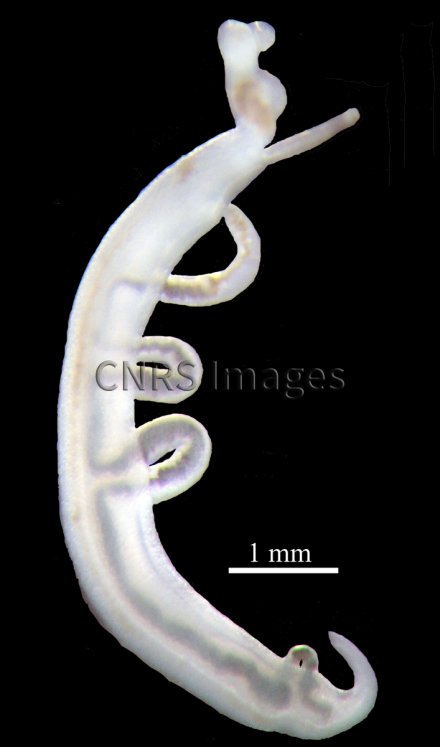Production year
2009

© Gabriel MOUAHID / IHPE / CNRS Images
20220060_0006
Couple de schistosomes, "Schistosoma mansoni", observé à la loupe binoculaire. En haut la tête du mâle avec des ventouses : celle située tout en haut lui permet de s'alimenter et celle un peu en dessous lui permet de s'accrocher. La femelle est le serpentin plus foncé que l'on voit dans le mâle. Ce parasite est responsable de la bilharziose, une maladie parasitaire dont les vecteurs sont des mollusques d’eau douce.
The use of media visible on the CNRS Images Platform can be granted on request. Any reproduction or representation is forbidden without prior authorization from CNRS Images (except for resources under Creative Commons license).
No modification of an image may be made without the prior consent of CNRS Images.
No use of an image for advertising purposes or distribution to a third party may be made without the prior agreement of CNRS Images.
For more information, please consult our general conditions
2009
Our work is guided by the way scientists question the world around them and we translate their research into images to help people to understand the world better and to awaken their curiosity and wonderment.